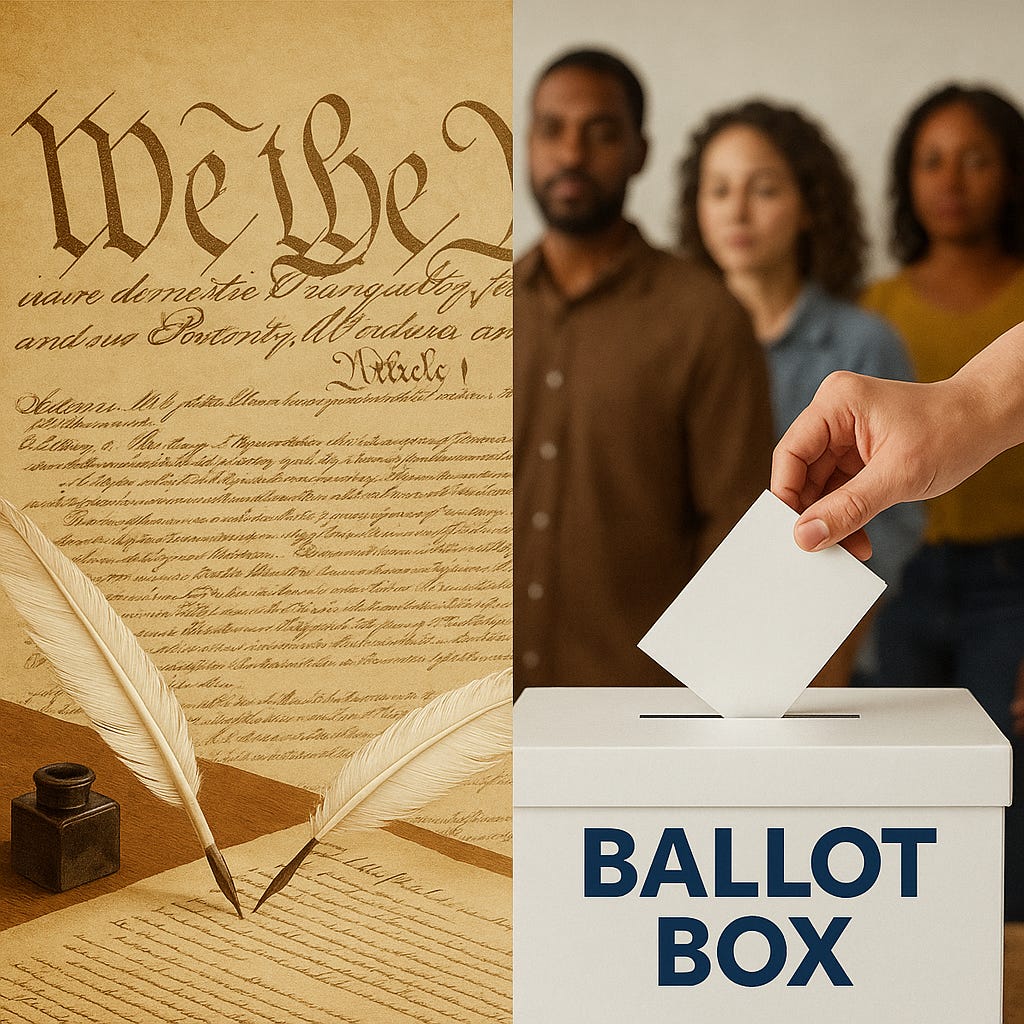One Person, One Vote
Democracy is messy, but it’s ours. What would it take to make America a true direct democracy, one person, one vote?
One Person, One Vote: It’s Time for a Direct Democracy
I’m worried. The kind of worry you feel when you’re driving home and see dark smoke rising near your neighborhood.
Can our democracy survive long enough to limp into the 2026 midterms? Will there even be a “free and fair” election?
In the Republican effort to cling to House control, the redistricting battles between red and blue states verge on the ridiculous. It feels less like fair representation and more like a carnival shell game.
I think it’s time for the United States of America to become a true, direct democracy: one person, one vote.
What We Have vs. What We Think We Have
Many voters still believe the U.S. is already a direct democracy. It’s not. We have a representative democracy; we elect people who make decisions for us. A true direct democracy would mean we vote on laws and policies ourselves, not just on the people who pass them.
Some Americans can’t imagine why that distinction matters. Maybe they’re the same voters who still think tRump just “tricked” them.
One person, one vote. Easy for me to say, and it’s getting easier!
Why My Vote Feels Powerless
Take my own district. Ken Calvert (R), District 41, has been in Congress for over 30 years. Thirty. I can’t think of a single time he’s voted the way I would have hoped, or in favor of his constituents. He recently voted for the so-called “Big Beautiful Bill Act,” which gutted Medicaid and food assistance programs. That single vote will strip healthcare from millions and push families into food insecurity.
I’m a registered Democrat. Yet here, my vote doesn’t matter. I’m “represented” by a tRumpian Republican whose loyalty is to party power, not people.
Rewriting the Operating System
Harsh truth: to constitutionally transform into a direct democracy, the U.S. would need nothing short of a complete rewrite of its operating system.
Amend Articles I, II, IV (or eliminate them outright).
Create a new amendment establishing national binding referendums.
Rethink checks and balances, since direct democracy can easily clash with minority protections and judicial independence.
What we have now, representative democracy with direct elements at the state level (ballot initiatives, referendums, recalls), would need to expand to every law, every policy, every federal decision.
Sounds messy. Really messy.
(Messy like Thanksgiving dinner with both sides of the family messy.)
But then again, democracy is messy. Always has been.
A Look Back at the First Draft
Here’s how it went the first time around:
Drafting & debate: May 25 – Sept 17, 1787
Clause writing: June – Sept 1787
Final text signed: Sept 17, 1787
State ratification: Dec 7, 1787 – June 21, 1788
First Congress & Bill of Rights: March 4, 1789
Bill of Rights proposed: Sept 1789
Bill of Rights ratified: Dec 15, 1791
In short:
From writing/editing to a signed document -4 months.
From signing to an operative Constitution → 9 months.
Total: just 13 months from convention start to working Constitution.
With the Bill of Rights in place - a little over 4 years.
Reality Check
I know it wouldn’t happen in 13 months today. We’re dealing with 50 states, not 13. And 27 amendments, not just 10.
I also know it won’t happen in my lifetime. I’m 70. Let’s say I live to 90. A project like this would take far longer than 20 years.
But maybe my children, or my grandchildren, could see it. And that’s enough to keep me writing, voting, and speaking up.
No one is getting any younger here, folks, it should begin now.
Because one person, one vote is worth fighting for.
If you enjoyed reading today’s blog, please feel free to pass it along to a friend, or friends! As always, I look forward to any comments you may have. Sign up below, and it’ll automatically come to your inbox. It’s FREE

